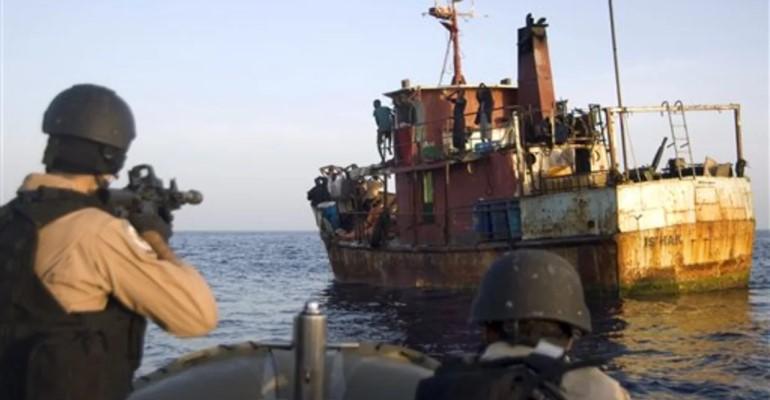Ominous signs of activity from Somali pirates, who it was thought had been suppressed by the agreement reached in 2009 known as the Djibouti Code of Conduct (DCoC) which led to the creation of an international task force to prevent pirate attacks.
Since 2012, piracy off Somalia has been limited to a 2017 and the attack on the Lila Norfolk on 4 January this year and a drone attack on vessel west of India on 23 December, and the continuing incident of the Navibulgar owned bulker Ruen, hijacked on 14 December.
Few other events of note had taken place in the area; although the UK Maritime Trade Operations office has recorded a host of minor incidents where small, fast-moving boats, with few crew, sometimes with visible weapons have come close to ships.
UKMTO said that it does not give press statements, it only makes information available to vessel operators navigating the region.
However, the newly elected IMO Secretary General, Arsenio Dominguez, condemned the attacks in both the Red Sea and Arabian Sea/Indian Ocean regions, in a speech that he made to the UN Security Council on 4 January.
Not acceptable
“Attacks against international shipping in the Red Sea area are not acceptable,” he said, adding, “I would like to take this opportunity to reiterate the call for de-escalation to ensure safety of our seafarers, freedom of navigation and stability of supply chains.”
An extraordinary meeting of DCoC members on 18 December attended by DCoC signatory states, international naval forces, and maritime industry stakeholders, said Dominguez.
Dominguez said that the meeting called for improved security measures through the coordination of naval protection and the industry, and continuous meetings/reviews and submission of recommendations to the IMO and the UN Security Council.
Dominguez will hold a number of meetings this week and next week with regional states, navies and shipping industry bodies on the maritime security situation in the region in general.
Mixed reaction
Maritime sector reaction has been mixed, so far. Corey Ranslem, CEO at Dryad Global said: “We’ve seen the hijacking of a handful of hijackings of fishing Dhow’s and the cargo vessel Ruen within the past few weeks along with a number of suspicious approaches and one hijacking attempt last week. Right now, these isolated activities don’t point to the full re-emergence of piracy within this region like we saw back in the mid-2000’s. However, this is a situation we are continuing to monitor.”
At Bimco the anxiety was more palpable with Jakob Paaske Larsen declaring: “Bimco is concerned with the developments. We are slightly surprised to see the increase in incidents apparently related to Somali pirates. We are monitoring the situation closely and recommend shipowners do a thorough security risk assessment ahead of transiting the area.”
Larsen reminded carriers to follow the Best Management Practices developed to protect vessels from attacks (BMP5).
BMP5 guidelines urge vessel operators to understand the threat, conduct risk assessments, implement protection measures, report incidents to the UKMTO and to co-operate with other merchant shipping as well as naval forces operating in the area.
Lila Norfolk incident
The benefits of preparedness were evident in the Lila Norfolk incident which saw the crew, who were mostly Indian nationals, head for the citadel, call for help which was readily dispatched by the Indian military.
All the crew were rescued uninjured and the attackers fled the scene before the military had reached the vessel, some 460 miles east of Eyl, in Somalia.
Although the Indian navy responded in the Lila Norfolk case the Philippine Navy currently heads the Combined Naval Forces in a 39-nation partnership, with the counter-piracy group known as the Combined Task Force 151 (CTF151).
Ranslem described how the expanding regions were being monitored by separate naval assets operating in distinct, but closely linked, regions.
“CTF 151 has been overseeing the naval assets for counter-piracy operations within the Gulf of Aden region. Currently I believe there are Indian and Spanish naval vessels that are part of this operation,” said Ranslem. “The US don’t have vessels that are part of that operation before the deployment of assets to the Red Sea. The deployment of US and other coalition assets is currently concentrating on the Red Sea area with CTF151 working the Gulf of Aden operations.”
Vessels from CTF151, in co-ordination with Somali authorities and the EU Naval Force, EUNAVFOR, continue to monitor the captured bulk carrier Ruen, a Maltese flagged ship of 45,000 dwt, hijacked on 14 December.
EUNAVFOR reported: “In the early morning of the 18 (December), a member of the crew of the MV Ruen was evacuated to the INS Kochi, for medical care.”
At that time, and up to now, there has been no reported demands from the pirates with the vessel still being monitored by Somali, CTF151 and EUNAVFOR authorities.
IMO says it is still monitoring the situations in both the Red Sea and Gulf of Aden regions, but it remains too early for the authorities to declare an escalation or re-emergence of Somali piracy, though this position could change in a fluid and volatile regional situation.
Copyright © 2024. All rights reserved. Seatrade, a trading name of Informa Markets (UK) Limited.
Add Seatrade Maritime News to your Google News feed.  |

